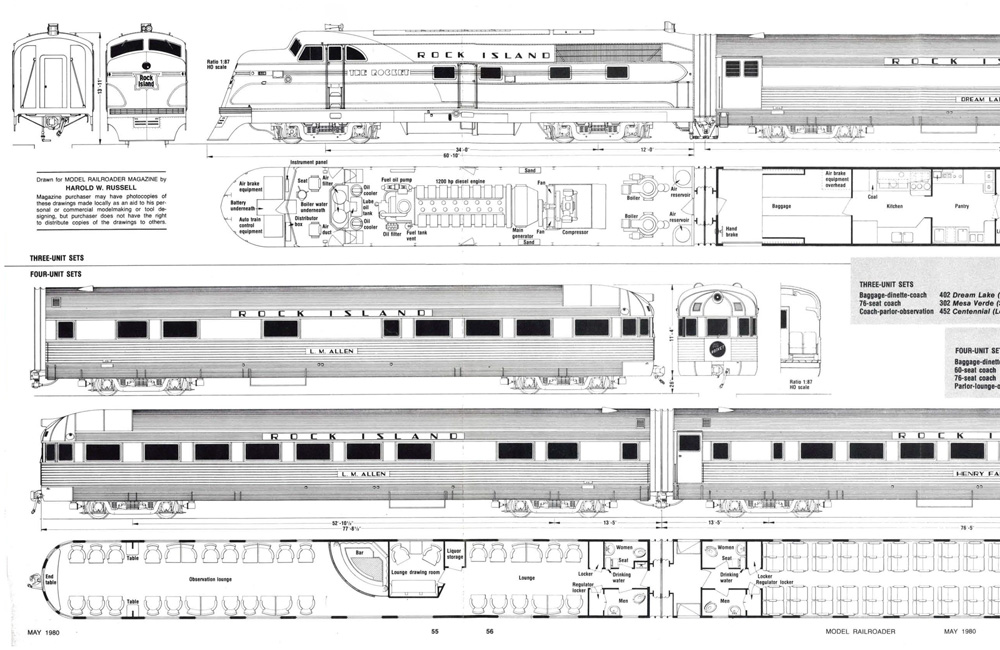
Q: I’m looking to build an HO scale Rock Island Rocket and its Electro-Motive Corp. TA diesel locomotive. I know that Model Railroader published Rock Island Rocket drawings several years ago (1986 or so), and I was wondering where I might find these plans? I think that the TA plans were reprinted in an MR book of locomotive plans, which would help, but I also need the drawings of the cars to go with it. Thank you in advance. – Larry Mager
A: The Rock Island Rocket was not a passenger train, but rather, a group of trains. They were named for the Rocket, the Rogers-built 4-4-0 steam locomotive that pulled the first Chicago, Rock Island & Pacific train into Joliet, Ill., in 1852. Each Rocket passenger train was made up of a three- or four-car streamlined, semi-articulated consist built by Budd in Philadelphia. Each was pulled by a single 1,200-hp TA locomotive.
The Peoria Rocket made two round trips a day between Chicago and Peoria, Ill. The Des Moines Rocket made one round trip from Chicago to the Iowa capital and back a day. The Texas Rocket ran between Houston and Fort Worth, Texas, on joint Rock Island-Fort Worth & Denver trackage. The Kansas City-to-Denver Denver Rocket ran just three days a week, and the Kansas City Rocket raced from its namesake city to Minneapolis, Minn., and back. (Except for the Texas Rocket, the trains were named for their westernmost terminus.)
All those routes began service in 1937, the year the Chicago, Rock Island & Pacific bought TA locomotives 601-606 from Electro-Motive Corp., predecessor to General Motors’ Electro-Motive Division. However, not all lasted. By the end of 1938, the Denver and Texas routes had been dropped and their equipment reassigned to run from Kansas City to Dallas.
The Rock Island Rocket drawings you’re looking for were published in our May 1980 issue. If you’re a subscriber to our Trains.com digital archive, you can read the issue there. The car plans were on a multi-page foldout, which means if you view the article on our website, those pages will appear compressed and distorted to fit into a single page viewer. However, when you click the “Download PDF” button (all the way to the right on the bottom menu bar), you can see (and print) the pages in their proper proportion.
Send us your questions
Got a question about modeling, operation, or prototype railroading? E-mail it to us at AskTrains@Trains.com. Include your full name and hometown and put “Ask MR” in the subject.













